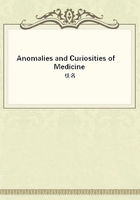
第418章
There was another in the second century, A.D., under the reign of Marcus Aurelius, and again in the third century, under the reign of the Gauls; following this was the terrible epidemic of the sixth century, which, after having ravaged the territory of the Gauls, extended westward. In 542 a Greek historian, Procopius, born about the year 500, gives a good description of this plague in a work, "Pestilentia Gravissima," so called in the Latin translation. Dupouy in "Le Moyen Age Medical," says that it commenced in the village of Peleuse, in Egypt, and followed a double course, one branch going to Alexandria and the other to Palestine. It reached Constantinople in the Spring of 543, and produced the greatest devastation wherever it appeared. In the course of the succeeding half century this epidemic became pandemic and spread over all the inhabited earth. The epidemic lasted four months in Constantinople, from 5000 to 10,000 people dying each day. In his "History of France," from 417 to 591, Gregorius speaks of a malady under the name inguinale which depopulated the Province of Arles. In another passage this illustrious historian of Tours says that the town of Narbonne was devastated by a maladie des aines. We have records of epidemics in France from 567 to 590, in which bubonic symptoms were a prominent feature. About the middle of the fourteenth century the bubonic plague made another incursion from the East. In 1333, fifteen years before the plague appeared in Europe, there were terrible droughts in China followed by enormous floods in which thousands of people perished. There are traditions of a plague in Tche in 1334, following a drought, which is said to have carried off about 5,000,000 people. During the fifteen years before the appearance of the plague in Europe there were peculiar atmospheric phenomena all over the world, besides numerous earthquakes. From the description of the stinking atmosphere of Europe itself at this time it is quite possible that part of the disease came, not from China, but originated in Southern Europe itself. From China the route of caravans ran to the north of the Caspian Sea, through Asia, to Tauris. Here ships were ready to take the produce of the East to Constantinople, the capital of commerce, and the medium of communication between Europe, Asia, and Africa. Other caravans went from Europe to Asia Minor and touched at the cities south of the Caspian Sea, and lastly there were others from Bagdad through Arabia to Egypt; the maritime communication on the Red Sea to Arabia and Egypt was also not inconsiderable. In all these directions contagion found its way, though doubtless Constantinople and the harbors of Asia Minor were the chief foci of infection, whence it radiated to the most distant seaports and islands. As early as 1347 the Mediterranean shores were visited by the plague, and in January, 1348, it appeared in the south of France, the north of Italy, and also in Spain. Place after place was attacked throughout the year, and after ravishing the whole of France and Germany, the plague appeared in England, a period of three months elapsing before it reached London. The northern kingdoms were attacked in 1349, but in Russia it did not make its appearance before 1351.
As to the mortality of this fearful epidemic Dupony considers that in the space of four years more than 75,000,000 fell victims, that is, about half of the population of the countries visited. Hecker estimates that from 1347 to 1351, 25,000,000people died, or one-quarter of the total population of Europe. It was reported to Pope Clement that throughout the East, probably with the exception of China, nearly 24,000,000 people had fallen victims to the plague. Thirteen millions are said to have died in China alone. Constantinople lost two-thirds of its population.
When the plague was at its greatest violence Cairo lost daily from 10,000 to 15,000, as many as modern plagues have carried off during their whole course. India was depopulated. Tartary, Mesopotamia, Syria, Armenia, and Arabia were covered with dead bodies. In this latter country Arabian historians mention that Maara el nooman, Schisur, and Harem in some unaccountable manner remained free. The shores of the Mediterranean were ravaged and ships were seen on the high seas without sailors. In "The Decameron" Boccaccio gives a most graphic description of the plague and states that in Florence, in four months, 100,000perished; before the calamity it was hardly supposed to contain so many inhabitants. According to Hecker, Venice lost 100,000;London, 100,000; Paris, 50,000; Siena, 70,000; Avignon, 60,000;Strasburg, 16,000; Norwich, 51,100. Dupony says that in one month there were 56,000 victims in Marseilles, and at Montpellier three-quarters of the population and all the physicians were stricken with the epidemic.
Johanna of Burgundy, wife of King Philip VI of Valois; Johanna II, Queen of Navarre, granddaughter of Philippe le Bel; Alphonse XI of Castile, and other notable persons perished. All the cities of England suffered incredible losses. Germany seems to have been particularly spared; according to a probable calculation, only about 1,250,000 dying. Italy was most severely visited, and was said to have lost most of its inhabitants. In the north of Europe two of the brothers of Magnus, King of Sweden, died; and in Westgothland alone 466 priests died. The plague showed no decrease in the northern climates of Iceland and Greenland, and caused great havoc in those countries.